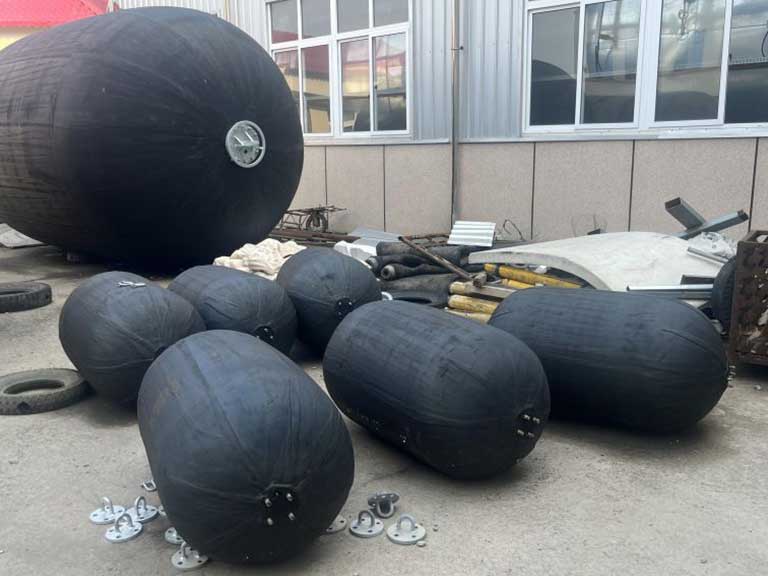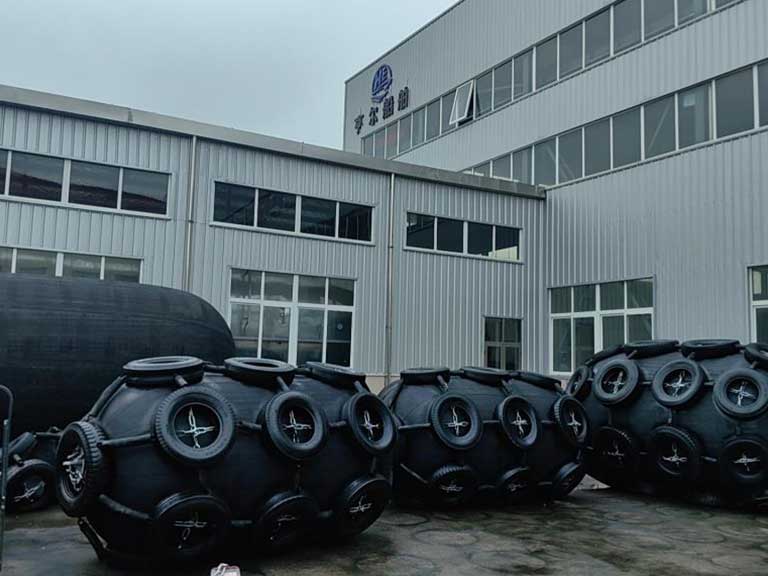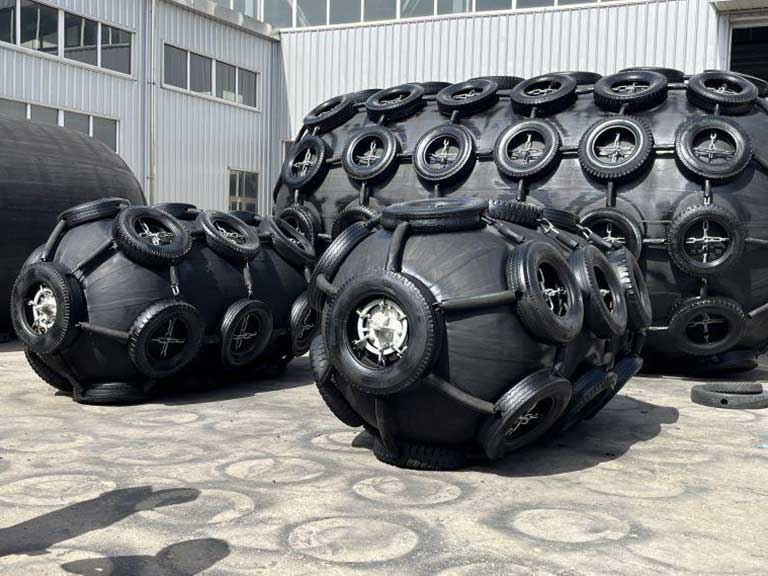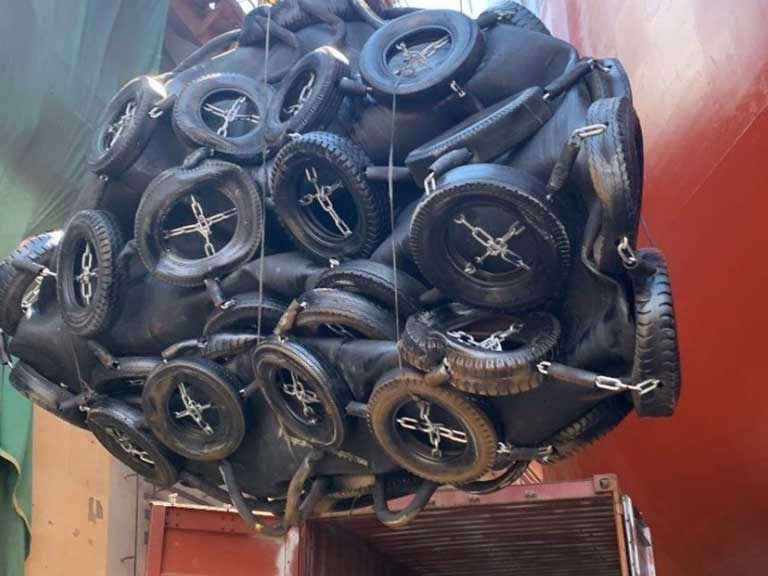Pneumatic fenders play a vital role in the maritime industry. They reduce damage and maintenance costs by providing cushioning protection to minimize the impact forces generated during docking or contact of vessels. These fenders are widely used in port terminals, ships, floating facilities, and other locations to effectively protect mooring platforms and vessels. So, do you know how to safely transport and store pneumatic fenders?
The safe transportation and storage of pneumatic fenders is crucial in the maritime industry. Correct handling not only extends the life of the fender, but also ensures its performance and safety in actual use. If pneumatic fenders are not handled properly during transportation and storage, they may lose their structural strength or lose their proper cushioning effect. Standardized operating procedures and maintenance measures are therefore essential to protect these critical pieces of equipment.
Table of Contents
Benefits of Using Pneumatic Fenders for Boat Protection
Pneumatic fenders have many advantages that have changed the way we protect our ships. They’re practical and easy to handle. Our fenders are built to keep your boat safe while being easy to store and move.
Space-Saving Design for Easy Storage
Pneumatic fenders save space better than old-style fenders. They shrink to about 20% of their size when not in use. This is perfect for boats where space is limited.
- They’re easy to fold up for storage.
- They fit well in small spaces, keeping your boat safe.
Durability and Impact Resistance
Our pneumatic fenders are tough and can take a hit. They’re made with special materials and designs. This makes them flexible yet strong.
- They can handle being squished against docks and other boats.
- They meet high-quality standards, thanks to ISO 9001:2008 certification.

Choosing the Right Pneumatic Fender for Your Vessel
Choosing the right Yokohama fender is key to protecting your boat. At Henger Shipping Supplies, we help you pick the best one for your boat. We know how important it is to choose the right size and material.
When picking a fender, size and material matter a lot. The right size depends on your boat’s length and how it docks. We suggest a fender that’s at least 1 inch in diameter for every 4-5 feet of boat.
In addition, the material also affects how well the fender works. High-quality marine-grade PVC is best. It resists UV damage and wear. We use special materials that stay flexible in different temperatures. They also stay strong when compressed or hit.
Proper Inflation and Deflation Techniques
How you inflate and deflate your fenders matters a lot. Doing it right keeps them working well and lasting longer.
Using Pumps and Valves Effectively
Use marine pumps with the right valves for easy inflation. Make sure valves are clean before you start. This prevents damage and air leaks. You can also inflate them by hand in emergencies.
- Marine pumps make inflation quick.
- You can inflate them by hand if needed.
Achieving Optimal Pressure Levels
Getting the right pressure is key for your fenders. Most work best at 2-3 PSI. This makes them firm but still absorb impacts well. Too little pressure doesn’t protect enough, and too much can damage the fender.
- The right pressure keeps them effective.
- Temperature changes can affect pressure.

How To Safely Transport And Store Pneumatic Fenders
To keep your pneumatic fenders in top shape, it’s key to know how to store and transport them right. Handling them correctly means they stay in good condition and are ready when you need them.
Folding and Packing Methods for Transport
When moving your pneumatic fenders, how you fold and pack them matters a lot. First, deflate the fender completely. Then, fold it lengthwise and roll it from the valve end to the other end to get rid of any air left. This way, you can store them more compactly.
- Store multiple fenders in mesh bags or containers to keep them cool and safe from sharp things and too much heat.
- Make sure the fenders are secure during transport to avoid damage from rubbing or sharp objects.
Ideal Storage Conditions and Environments
The place where you store your pneumatic fenders is very important. It’s best to keep them in a spot with a moderate temperature (50-80°F or 10-27°C), low humidity, and not too much sunlight.
- For storage longer than three months, inflate the fenders to about 25% to prevent damage from creasing.
- Don’t store them near heat, chemicals, or petroleum products, as these can harm the material.
By following these tips, you can keep your pneumatic fenders safe and in good condition. This way, they will work well for your boat for a long time.

Maintenance Tips to Extend Fender Lifespan
It’s important to take care of your pneumatic fenders to make sure they protect your boat well. Set up a regular maintenance routine to keep them in the best shape.
Cleaning and Inspection Routines
Start by cleaning your fenders well with mild soap and fresh water after each use, especially if they’ve been in saltwater. While cleaning, check your fenders carefully, focusing on seams, valve parts, and areas that get a lot of wear.
- Clean with mild soap and fresh water after each use.
- Inspect seams, valve assemblies, and high-wear areas systematically.
Addressing Punctures and Damage
For small scratches and scuffs, use special marine vinyl cleaners and protectants. For tiny holes, use approved repair kits in dry, cool weather. But for bigger damage, you might need a pro to fix or replace the fender to keep it strong.
- Use marine vinyl cleaners for minor scuffs.
- Apply manufacturer-approved repair kits for small punctures.
Conclusion
To sum up, well-maintained pneumatic fenders are key for any boat’s safety. They are easy to store and offer strong protection when docking. This makes them a must-have for any boat owner.
Our fenders are ISO9001-2008 certified, ensuring top quality and reliability. By following our care tips, you can make your fenders last longer. This means more protection for your boat.
Our customers love how our fenders perform in tough docking situations. They prove that our fenders are worth the investment. The right fender keeps your boat safe and secure on the water.

FAQ
What is the recommended way to clean pneumatic fenders?
Clean your fenders with mild soap and water. Stay away from harsh chemicals or rough materials that can harm them.
How often should I inspect my pneumatic fenders for damage?
It’s important to check your fenders often. Inspect them before and after use, and at least once a month if they’re stored.
Can I use any pump to inflate my fenders?
Many pumps work for inflating our fenders, but we suggest a pump made for inflatable boat fenders. It ensures the right pressure and avoids damage.
What is the ideal storage condition for pneumatic fenders?
Keep your fenders in a cool, dry spot away from sunlight. Don’t fold or crease them in the same spot to avoid damage.
How do I determine the correct size of pneumatic fender for my vessel?
The right fender size depends on your boat and docking conditions. Talk to a marine expert or use our size chart to find the best fit.
What material are your pneumatic fenders made of?
Our fenders are made from tough, marine-friendly materials. The exact material may change, but we always meet high-quality standards.
What is the service life of Yokohama Pneumatic Fenders?
Under normal maintenance conditions, high-quality pneumatic fenders can typically be used for 10-15 years.




